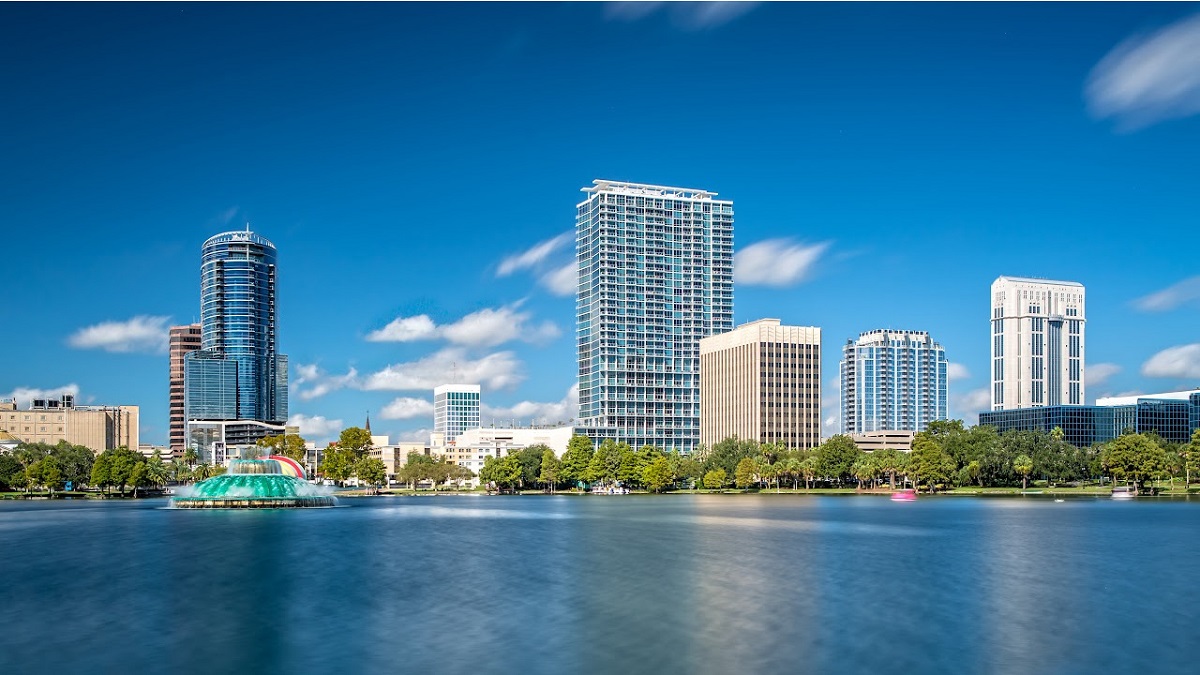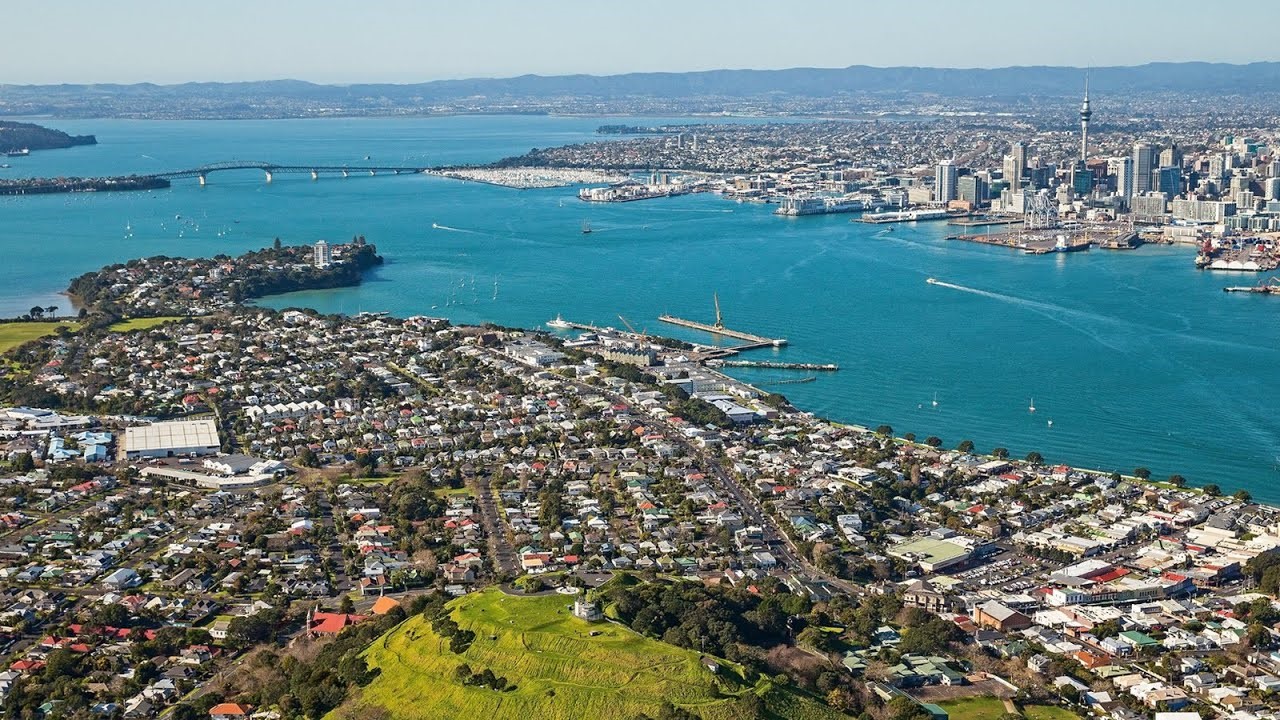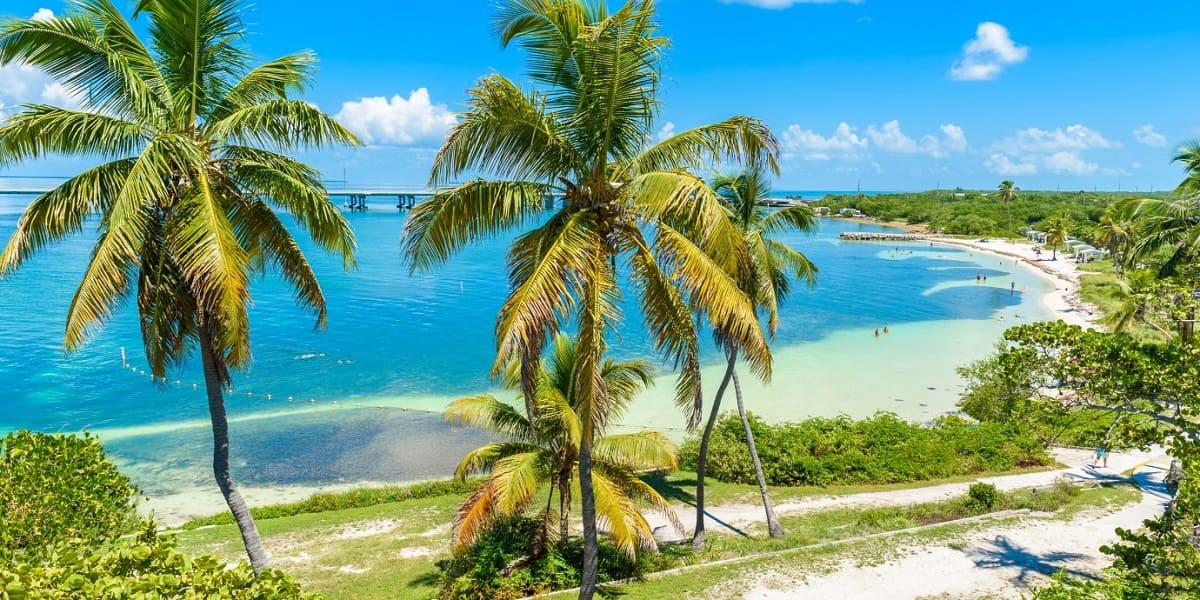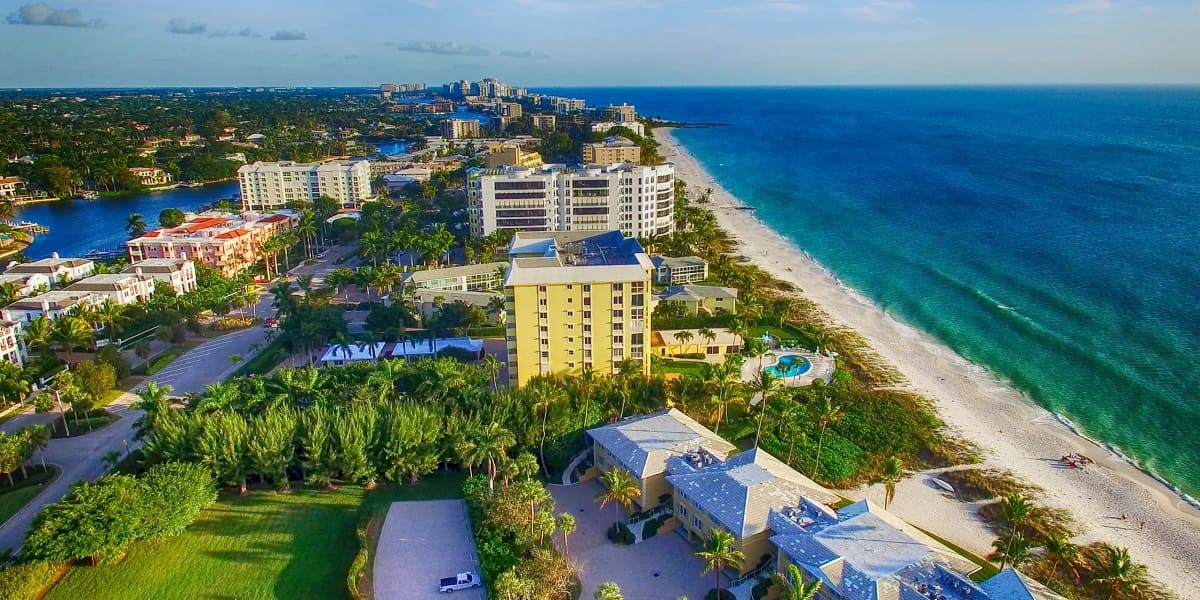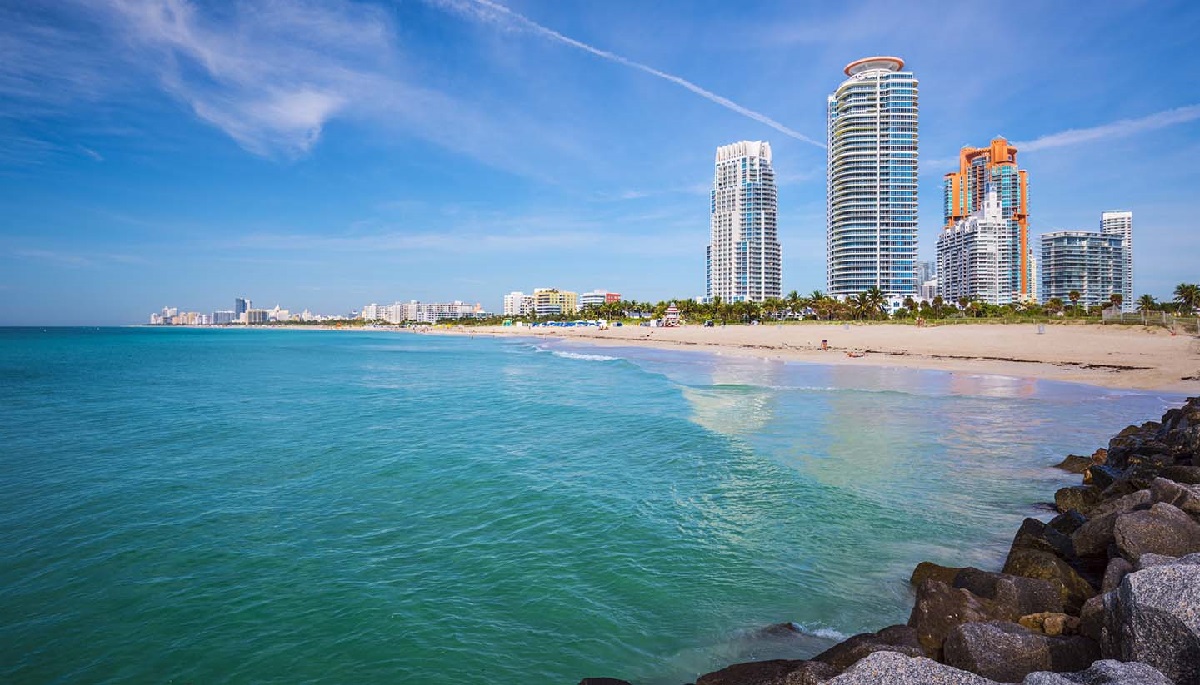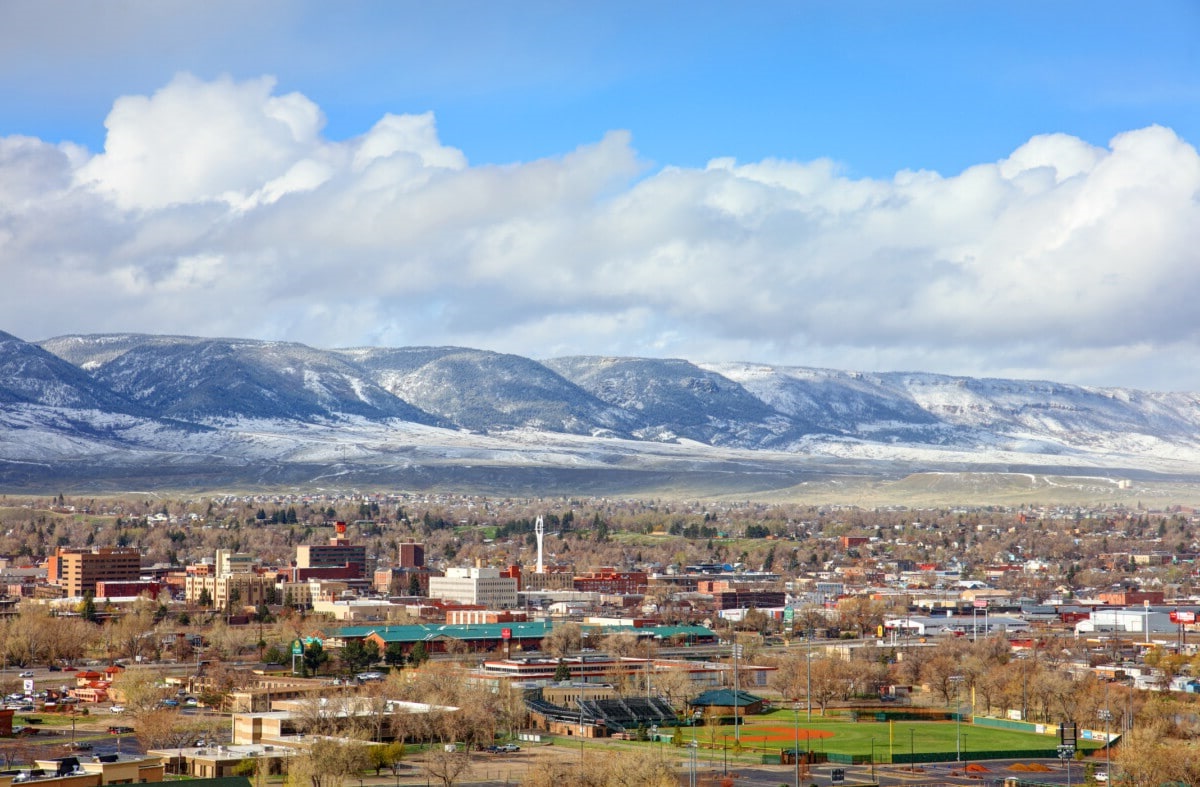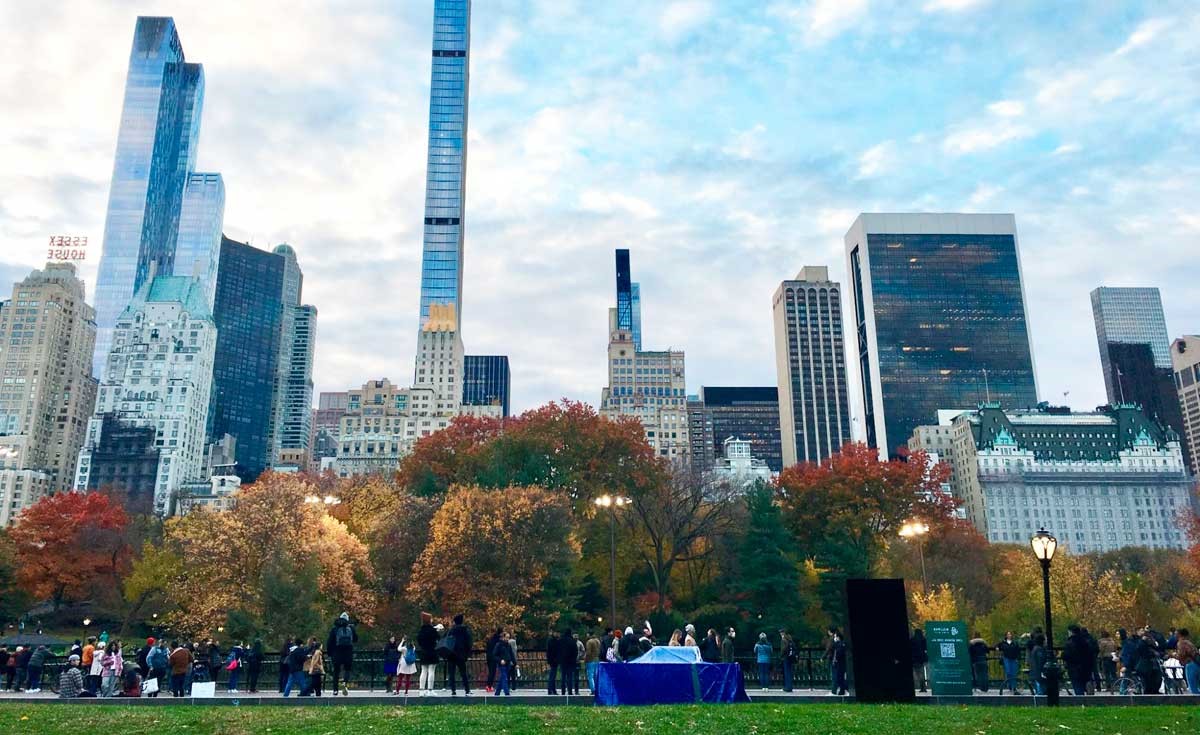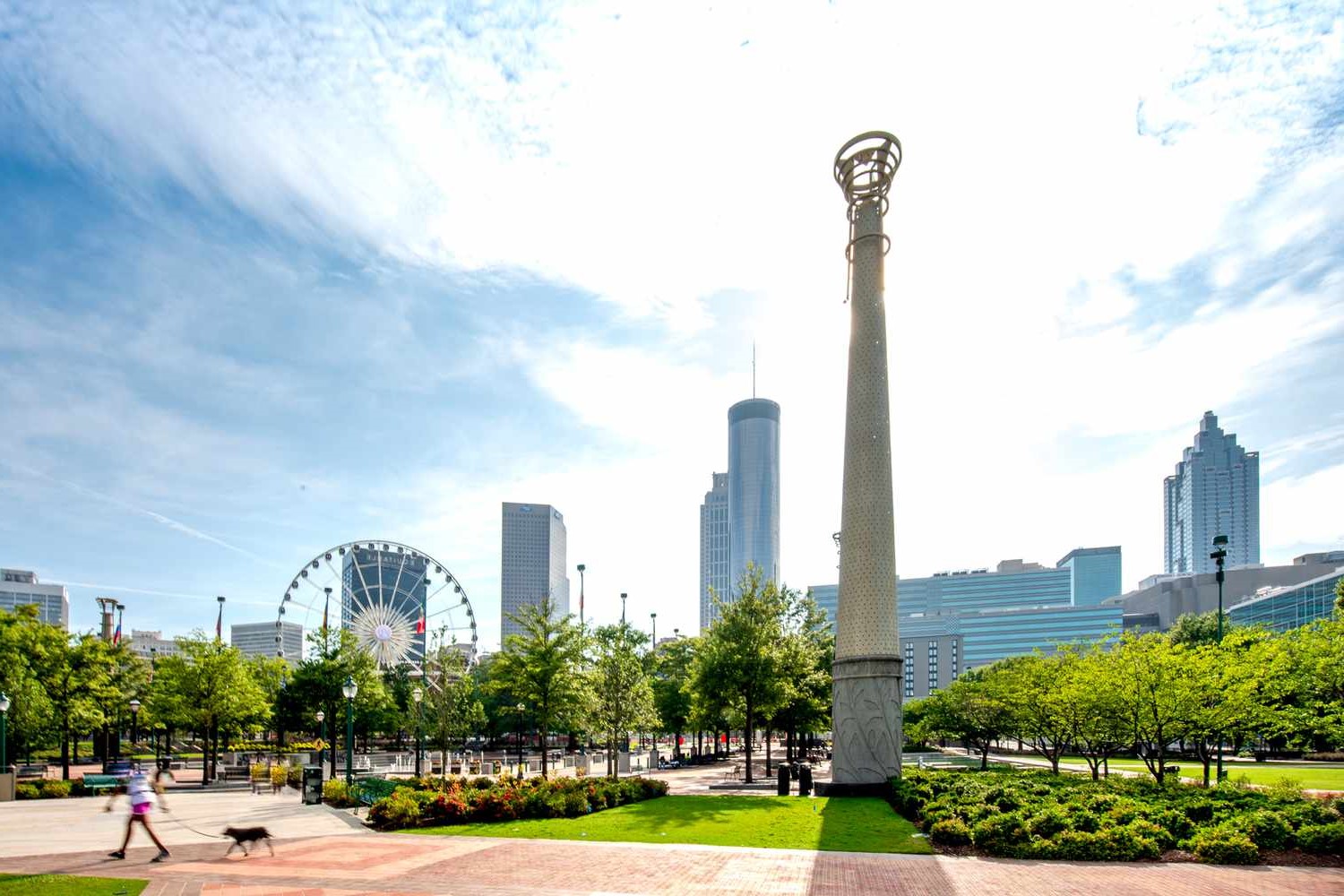Home>Weather and Climate>Orlando Weather: A Comprehensive Guide To The Climate In Orlando
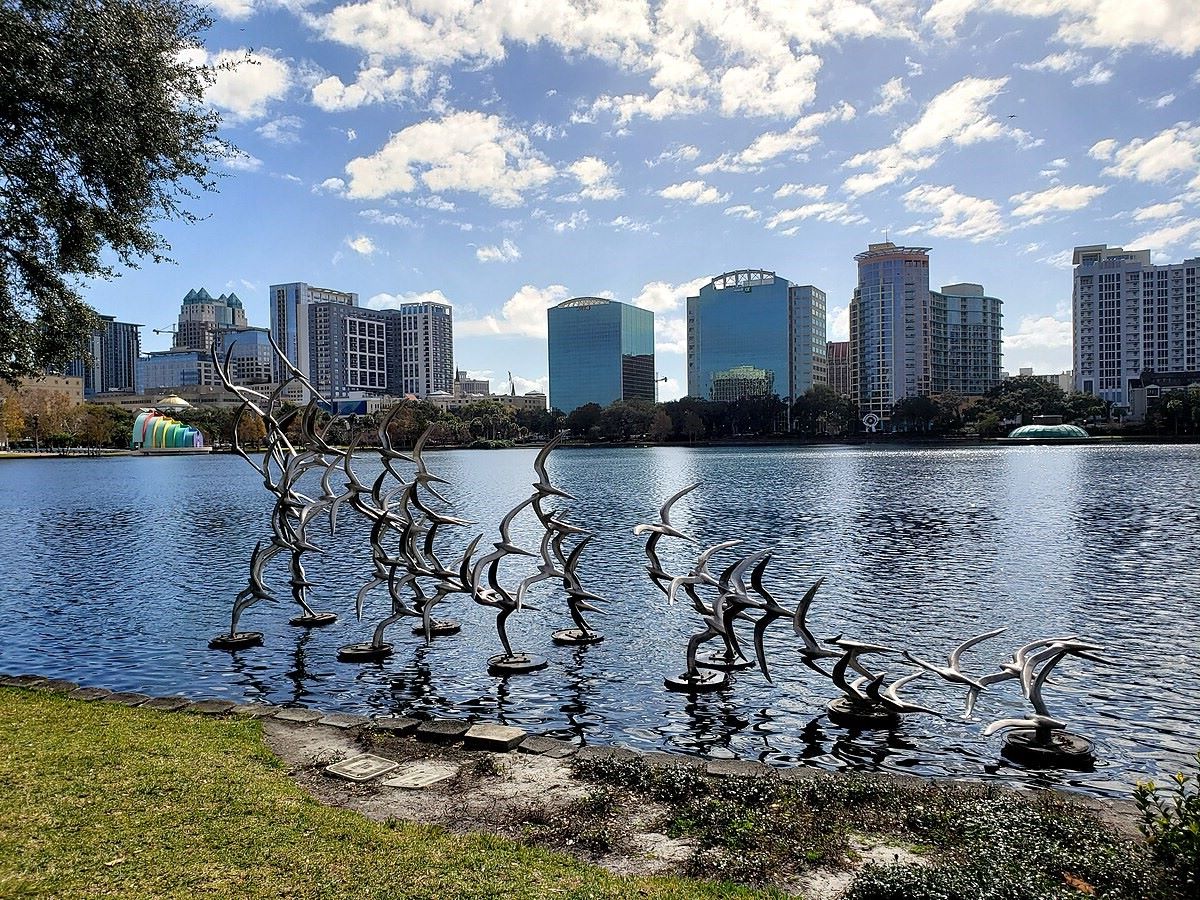

Weather and Climate
Orlando Weather: A Comprehensive Guide To The Climate In Orlando
Published: March 7, 2024
Discover the weather and climate in Orlando with our comprehensive guide. Plan your trip with insights into the seasonal variations and average temperatures.
(Many of the links in this article redirect to a specific reviewed product. Your purchase of these products through affiliate links helps to generate commission for Temperatures.com, at no extra cost. Learn more)
Table of Contents
Introduction
Orlando, Florida, is a city known for its enchanting theme parks, vibrant entertainment scene, and diverse cultural attractions. Nestled in the heart of the Sunshine State, Orlando boasts a climate that is as dynamic and captivating as the city itself. Understanding the weather patterns and climate of Orlando is essential for both residents and visitors alike, as it greatly influences daily activities, outdoor events, and travel plans.
In this comprehensive guide, we will delve into the intricacies of Orlando's climate, exploring the average temperatures throughout the year, rainfall and humidity levels, seasonal weather patterns, and even the occurrence of extreme weather events. Whether you're planning a vacation to the theme park capital of the world or considering a move to this bustling city, gaining insights into Orlando's weather will undoubtedly enhance your experience and preparedness.
Join us on a journey through the ever-changing skies of Orlando as we unravel the nuances of its climate, providing you with valuable knowledge to navigate the weather with confidence and ease. Let's embark on this meteorological exploration to uncover the fascinating world of Orlando's weather and climate.
Understanding Orlando's Climate
Orlando's climate is characterized by its subtropical nature, influenced by its proximity to the Gulf of Mexico and the Atlantic Ocean. The city experiences distinct seasons, with a pronounced wet season in the summer and a drier, cooler season in the winter. The subtropical climate brings warm to hot temperatures throughout much of the year, making Orlando a popular destination for those seeking sunshine and outdoor activities.
The city's location in Central Florida also contributes to its climate, with relatively flat terrain and inland positioning affecting weather patterns. The absence of significant geographical features, such as mountains or large bodies of water, allows weather systems to move freely across the region, resulting in relatively uniform weather conditions across the city.
Orlando's climate is also influenced by its proximity to the Gulf Stream, a warm ocean current that flows along the eastern coast of the United States. This influence contributes to the city's mild winters and warm, humid summers. The Gulf Stream helps moderate temperatures, preventing extreme cold in the winter and extreme heat in the summer.
Understanding the nuances of Orlando's climate involves recognizing the interplay of various factors, including its subtropical classification, geographical features, and proximity to ocean currents. These elements collectively shape the weather patterns and contribute to the overall climate experienced in this vibrant city.
As we continue our exploration of Orlando's weather and climate, we will delve deeper into the specific temperature ranges, rainfall patterns, and seasonal variations that define the meteorological landscape of this captivating city. Join us as we unravel the intricacies of Orlando's climate, providing you with valuable insights to navigate the weather with confidence and preparedness.
Average Temperatures Throughout the Year
Orlando's climate is characterized by its relatively warm temperatures, with distinct seasonal variations that shape the city's meteorological landscape. Understanding the average temperatures throughout the year is essential for residents and visitors alike, providing valuable insights for planning outdoor activities, packing appropriate clothing, and making informed travel decisions.
In the winter months, which span from December to February, Orlando experiences mild and pleasant temperatures. The average high temperatures range from 71°F (21.7°C) to 73°F (22.8°C), offering a comfortable environment for outdoor exploration and leisurely strolls through the city's parks and gardens. The evenings and early mornings tend to be cooler, with average low temperatures ranging from 49°F (9.4°C) to 52°F (11.1°C), requiring light layers to stay cozy during outdoor activities.
As spring unfolds in Orlando, the city transitions to warmer temperatures, signaling the arrival of the peak tourist season. From March to May, average high temperatures gradually climb from 78°F (25.6°C) to 88°F (31.1°C), creating an inviting atmosphere for outdoor festivals, al fresco dining, and visits to the renowned theme parks. The evenings remain comfortably mild, with average low temperatures ranging from 55°F (12.8°C) to 65°F (18.3°C), perfect for enjoying the city's vibrant nightlife and entertainment offerings.
Summer in Orlando brings the quintessential Florida heat, with average high temperatures soaring from 91°F (32.8°C) to 92°F (33.3°C) during the months of June to August. The humidity levels rise, contributing to the sultry tropical feel of the season. Despite the warmth, the evenings provide some relief, with average low temperatures ranging from 71°F (21.7°C) to 73°F (22.8°C), allowing for enjoyable outdoor activities after sunset.
As the summer transitions to fall, Orlando experiences a gradual cooling trend, offering a pleasant respite from the summer heat. From September to November, average high temperatures decrease from 89°F (31.7°C) to 80°F (26.7°C), creating an ideal climate for outdoor events, nature excursions, and theme park adventures. The average low temperatures range from 59°F (15°C) to 54°F (12.2°C), providing comfortable conditions for evening gatherings and leisurely walks under the autumn skies.
Understanding the average temperatures throughout the year in Orlando provides valuable insights for planning and enjoying the city's diverse array of outdoor activities, from theme park adventures to nature explorations and cultural festivities. Whether you're a local resident or a visitor embarking on a memorable vacation, being attuned to the seasonal temperature variations allows for a well-prepared and enjoyable experience in the heart of Central Florida.
Rainfall and Humidity Levels
In addition to its warm temperatures, Orlando's climate is characterized by distinct wet and dry seasons, with notable variations in rainfall and humidity levels throughout the year. Understanding these patterns is crucial for planning outdoor activities, agricultural practices, and water resource management in the region.
The wet season in Orlando spans from June to September, coinciding with the peak of summer. During this period, the city experiences higher levels of rainfall, often in the form of afternoon thunderstorms that provide relief from the intense heat. The average monthly rainfall ranges from 7 to 8 inches during these months, contributing to lush green landscapes and vibrant flora across the city. The frequent but brief downpours are a hallmark of the summer season, adding a refreshing element to the tropical climate.
Conversely, the dry season, which extends from October to May, brings significantly lower rainfall levels to Orlando. The months of November through April are particularly dry, with average monthly rainfall ranging from 2 to 3 inches. This drier period creates arid conditions, necessitating careful water conservation measures and irrigation practices for agricultural endeavors and landscaping maintenance.
In addition to rainfall, humidity levels play a pivotal role in shaping the overall climate of Orlando. The city experiences high humidity throughout much of the year, especially during the summer months. The combination of warm temperatures and elevated humidity creates a muggy and tropical atmosphere, characteristic of subtropical regions. Visitors and residents alike often seek refuge in air-conditioned spaces or indulge in aquatic activities to escape the humidity and stay cool during the peak of summer.
Understanding the interplay between rainfall and humidity levels is essential for adapting to Orlando's climate and making informed decisions regarding outdoor plans, landscaping strategies, and overall comfort during different seasons. Whether enjoying the summer showers or navigating the drier months, being attuned to these meteorological nuances enhances the experience of living in or visiting the vibrant city of Orlando.
As we continue our exploration of Orlando's weather and climate, we will delve deeper into the seasonal weather patterns and the occurrence of extreme weather events, providing valuable insights for residents and visitors alike. Join us as we unravel the intricacies of Orlando's meteorological landscape, offering a comprehensive guide to navigating the city's ever-changing skies.
Seasonal Weather Patterns
Orlando's seasonal weather patterns exhibit a captivating rhythm, each season bringing its own distinct characteristics and atmospheric allure. From the balmy embrace of summer to the mild breezes of winter, the city's climate undergoes notable shifts, shaping the experiences of residents and visitors throughout the year.
Summer in Orlando unfolds with a flourish of warmth and vibrancy, marked by sultry days and the occasional afternoon thunderstorm. The season, spanning from June to September, showcases the quintessential Florida heat, with average high temperatures soaring into the 90s (°F) and the humidity enveloping the city in a tropical embrace. The frequent afternoon showers, often accompanied by dramatic lightning displays, provide a refreshing interlude, nourishing the lush landscapes and offering a brief respite from the sun's intense rays.
As summer transitions to fall, Orlando experiences a gradual cooling trend, signaling the arrival of a more temperate climate. From September to November, the city's weather becomes increasingly inviting, with milder temperatures and a gentle breeze that rustles through the changing foliage. The autumnal ambiance sets the stage for outdoor events, nature excursions, and leisurely strolls through the city's parks, inviting residents and visitors to savor the seasonal transition.
Winter in Orlando brings a delightful contrast to the warmth of the preceding months, offering mild and pleasant conditions for outdoor activities and cultural festivities. From December to February, the city experiences cooler temperatures, with average highs in the 70s (°F) and comfortably cool evenings that beckon residents and visitors to explore the city's enchanting holiday displays and seasonal attractions. While snow is a rarity in Orlando, the occasional light frost adds a touch of wintry charm to the region's subtropical landscape.
Spring emerges in Orlando with a burst of color and vitality, as the city's flora awakens and the temperatures gradually rise. From March to May, the weather becomes increasingly inviting, with warm days and balmy evenings that set the stage for outdoor festivals, al fresco dining, and visits to the renowned theme parks. The city comes alive with the sights and sounds of spring, offering a delightful backdrop for outdoor adventures and cultural explorations.
The seasonal weather patterns in Orlando weave a captivating tapestry of climate variations, each season contributing its own unique charm and opportunities for exploration. Whether embracing the warmth of summer, savoring the mild breezes of winter, or reveling in the vibrant ambiance of spring, residents and visitors alike are treated to a diverse array of meteorological experiences, each adding to the allure of this dynamic city.
As we continue our exploration of Orlando's weather and climate, we will delve deeper into the occurrence of extreme weather events and provide valuable insights for navigating the city's ever-changing skies. Join us as we unravel the intricacies of Orlando's meteorological landscape, offering a comprehensive guide to understanding and embracing the captivating weather patterns that define this vibrant city.
Extreme Weather Events
Orlando, like many regions in Florida, is susceptible to a variety of extreme weather events due to its subtropical climate and proximity to the Atlantic Ocean and the Gulf of Mexico. Understanding and preparing for these weather phenomena is crucial for residents and visitors alike, ensuring safety and mitigating potential risks associated with these occurrences.
One of the most notable extreme weather events in Orlando is the threat of hurricanes. The city is located in a region commonly affected by these powerful tropical cyclones, especially during the Atlantic hurricane season, which spans from June to November. While the city has not experienced a direct hit from a major hurricane in recent years, the potential for these storms to impact the region remains a significant concern. Residents and visitors are advised to stay informed about hurricane preparedness, including evacuation routes, emergency shelters, and securing property against potential wind and flood damage.
In addition to hurricanes, Orlando is also susceptible to severe thunderstorms and lightning strikes, particularly during the summer months. These intense storms can bring heavy rainfall, strong winds, and frequent lightning, posing risks to outdoor activities and electrical infrastructure. It is essential for individuals to seek shelter indoors during severe thunderstorms and to exercise caution when venturing outdoors after a storm, as downed power lines and flooding may present hazards.
Furthermore, the city occasionally experiences tornadoes, although they are typically of a weaker intensity compared to those in other regions of the United States. Nevertheless, tornadoes can pose a threat to life and property, requiring vigilance and preparedness. Understanding tornado safety protocols, such as seeking shelter in a sturdy building or designated storm shelter, is essential for mitigating the risks associated with these sudden and potentially destructive events.
While extreme weather events present challenges, the city of Orlando and its residents are equipped with robust emergency management systems and resources to address these occurrences. By staying informed, preparing emergency kits, and heeding official warnings and advisories, individuals can navigate these weather events with resilience and readiness, ensuring the safety and well-being of the community.
As we continue our exploration of Orlando's weather and climate, it is important to recognize the potential impact of extreme weather events and the measures in place to address these occurrences. By understanding and preparing for these weather phenomena, residents and visitors can navigate the ever-changing skies of Orlando with confidence and resilience.
Best Times to Visit Orlando
Choosing the best time to visit Orlando involves considering a myriad of factors, including weather, crowd levels, and seasonal events. While the city welcomes visitors year-round, certain periods offer distinct advantages for experiencing the magic of Orlando.
The spring months, from March to May, emerge as one of the best times to visit Orlando. During this period, the weather is pleasantly warm, with average temperatures ranging from the 70s to the 80s (°F), creating ideal conditions for outdoor activities and theme park adventures. The city comes alive with vibrant blooms and festivities, offering a delightful backdrop for exploring the renowned attractions and enjoying cultural events. Additionally, the spring season often sees a lull in tourist crowds compared to the peak summer months, allowing for a more relaxed and immersive experience.
Another favorable time to visit Orlando is during the fall, from September to November. As the summer heat gradually subsides, the city experiences milder temperatures, making it an inviting destination for outdoor excursions and theme park visits. The autumn ambiance sets the stage for seasonal events and festivals, providing a captivating blend of entertainment and natural beauty. Additionally, the post-summer period often brings reduced wait times at popular attractions, allowing visitors to make the most of their time in Orlando.
For those seeking to avoid peak tourist seasons and experience Orlando with fewer crowds, the winter months, from December to February, present an appealing opportunity. While the temperatures may be cooler, the city's holiday displays, festive events, and themed celebrations create a magical atmosphere, offering a unique perspective on Orlando's charm. Visitors can revel in the enchanting holiday spirit while enjoying the city's attractions with a more relaxed pace.
Ultimately, the best time to visit Orlando varies based on individual preferences and interests. Whether seeking temperate weather, reduced crowds, or seasonal festivities, each season offers its own allure, providing visitors with diverse opportunities to immerse themselves in the enchanting world of Orlando.
As we unravel the intricacies of Orlando's weather and climate, understanding the best times to visit the city enhances the potential for a memorable and enjoyable experience. Whether embarking on a family vacation, a romantic getaway, or a solo adventure, being attuned to the seasonal nuances allows visitors to make informed decisions and create lasting memories in the heart of Central Florida.
Tips for Dressing for the Weather
Dressing appropriately for the ever-changing weather in Orlando is essential for staying comfortable and enjoying all that the city has to offer. Whether exploring the enchanting theme parks, strolling through picturesque gardens, or savoring outdoor dining experiences, being prepared for the climate ensures a seamless and enjoyable time in this vibrant city.
Light and Breathable Clothing
Given Orlando's warm and humid climate, opting for light and breathable clothing is key to staying cool and comfortable. Lightweight fabrics such as cotton and linen allow for air circulation, helping to mitigate the effects of the humidity and warmth. Loose-fitting garments also provide freedom of movement and aid in ventilation, making them ideal choices for navigating the city's outdoor attractions.
Sun Protection
With abundant sunshine throughout the year, protecting oneself from the sun's rays is paramount. Wearing wide-brimmed hats, sunglasses with UV protection, and applying sunscreen are essential practices for safeguarding against the sun's intensity. These measures not only contribute to personal comfort but also promote skin health, allowing for worry-free exploration of Orlando's outdoor wonders.
Footwear for Exploration
Comfortable and supportive footwear is a must for traversing Orlando's diverse landscapes. Whether embarking on theme park adventures, nature trails, or urban explorations, choosing shoes with cushioning and arch support ensures comfort during extended periods of walking and standing. Additionally, breathable and moisture-wicking socks help maintain foot hygiene in the city's warm and humid conditions.
Layering for Variable Conditions
Orlando's climate can exhibit variations throughout the day, making layering a practical approach to dressing for the weather. Lightweight jackets or cardigans can provide warmth during cooler mornings or evenings, while being easily removable during the warmer daytime temperatures. This adaptable approach allows individuals to comfortably transition between indoor and outdoor environments without feeling overheated or underdressed.
Rain Gear for Showers
During the summer months, Orlando experiences brief but intense afternoon showers, necessitating the inclusion of rain gear in one's attire. Compact and portable rain jackets or umbrellas offer protection from sudden downpours, ensuring that outdoor plans can proceed without being dampened by the weather. Being prepared for these sporadic showers enhances the overall experience of exploring the city's outdoor attractions.
By incorporating these tips into one's wardrobe choices, residents and visitors can navigate Orlando's dynamic weather with ease and comfort, allowing for a seamless and enjoyable experience in this captivating city. Whether embarking on outdoor adventures, cultural explorations, or leisurely strolls, being attuned to the climate and dressing accordingly enhances the potential for memorable and fulfilling experiences in the heart of Central Florida.
Conclusion
In conclusion, Orlando's weather and climate offer a captivating tapestry of meteorological nuances, shaping the experiences of residents and visitors throughout the year. From the warm embrace of summer to the mild breezes of winter, each season brings its own distinct charm and opportunities for exploration in this vibrant city.
Understanding the average temperatures throughout the year provides valuable insights for planning outdoor activities, packing appropriate clothing, and making informed travel decisions. The seasonal variations in rainfall and humidity levels underscore the dynamic nature of Orlando's climate, influencing everything from agricultural practices to outdoor leisure pursuits.
The city's susceptibility to extreme weather events, including hurricanes, thunderstorms, and tornadoes, necessitates vigilance and preparedness. By staying informed and adhering to safety protocols, residents and visitors can navigate these occurrences with resilience and readiness, ensuring the safety and well-being of the community.
Choosing the best time to visit Orlando involves considering a myriad of factors, including weather, crowd levels, and seasonal events. Whether seeking temperate weather, reduced crowds, or seasonal festivities, each season offers its own allure, providing visitors with diverse opportunities to immerse themselves in the enchanting world of Orlando.
Dressing appropriately for the ever-changing weather in Orlando is essential for staying comfortable and enjoying all that the city has to offer. From light and breathable clothing to sun protection and rain gear, being prepared for the climate ensures a seamless and enjoyable time in this dynamic city.
As we unravel the intricacies of Orlando's weather and climate, it becomes evident that the city's meteorological landscape is as diverse and captivating as its cultural and entertainment offerings. Whether embarking on a family vacation, a romantic getaway, or a solo adventure, being attuned to the seasonal nuances allows visitors to make informed decisions and create lasting memories in the heart of Central Florida.
Ultimately, Orlando's weather and climate, with its subtropical allure and ever-changing skies, contribute to the city's vibrant and dynamic character, inviting exploration, discovery, and the creation of unforgettable experiences. Whether basking in the warmth of the sun, seeking refuge from a passing shower, or reveling in the seasonal transitions, Orlando's weather adds an extra dimension to the city's allure, enhancing the journey of residents and visitors alike.
